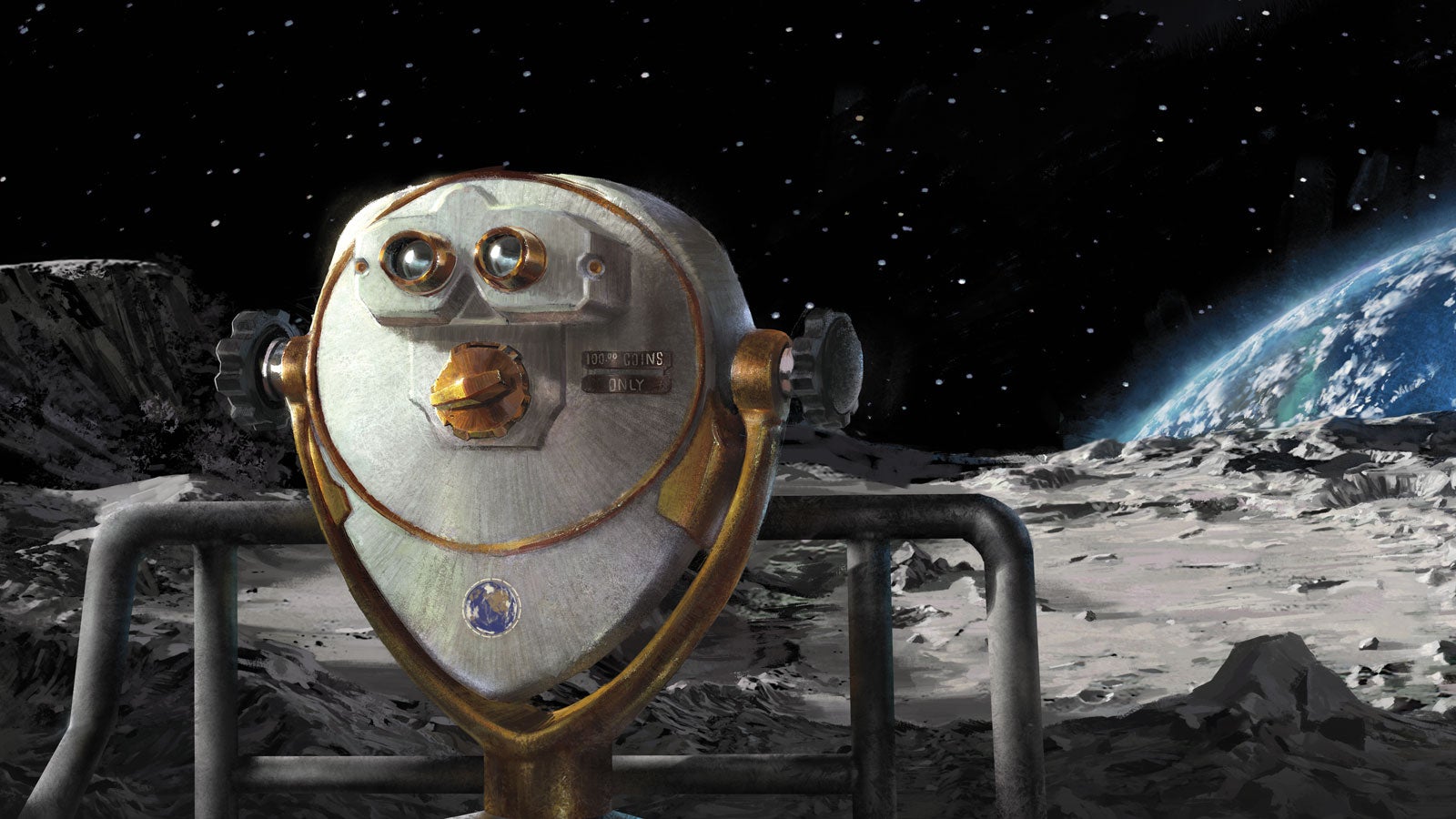
Opinion: Space Tourism
Summer 2016
The Next Big Adventure

Space tourism has come a long way since 1967 when Barron Hilton, then president of Hilton Hotels, described his vision for a hotel on the moon.
It was envisioned — complete with a Galaxy Lounge where visitors could enjoy a martini while looking at the stars — as a luxury for the wealthy elite.
Today, Sir Richard Branson’s Virgin Galactic aims to be the world’s first commercial “spaceline,” offering a 2.5-hour flight with six minutes of weightlessness and some incredible views. It even has more than 700 confirmed customers patiently waiting for flights. Additionally, Blue Origin, led by Amazon founder Jeff Bezos, aims to provide space tourism as well. While space tourism remains largely a status symbol for the super rich, this trend is not unusual in the history of tourism. And there’s reason to believe that eventually this particular brand of tourism will advance a new form of adventure, boost the economy and make people more aware of the vulnerability of our planet.
That’s because tourists have always pushed boundaries, seeking new places and experiences. You see this playing out in how people are choosing to travel. According to Leisure and Aging, “Adventure tourism is one of the fastest-growing segments of the tourism market. It has become so popular that approximately 100 million adults have chosen vacations that are classified as soft adventure.” Space tourism is a logical next step for this growing trend.
In addition to adding another outlet for thrill seekers, space tourism offers a new way to boost the world’s economy. According to a report conducted by the World Travel & Tourism Council, tourism generated $7.2 trillion (9.8 percent of the global gross domestic product) and provided 284 million jobs — for a total of one out of every 11 jobs on the planet in 2015. There’s every reason to believe that commercial space travel will have a similar impact on the economy.
As space adventure will boost the economy, it likewise will increase our appreciation of how rare and valuable our own planet is. The experience of traveling out of Earth’s atmosphere and looking back on the world we inhabit produces a sense of awe and respect. Space travelers will gain a deeper appreciation for our planet and hopefully want to take a more active approach to protecting it when they return to terra firma.
While risks remain, it is fair to assume that space tourism has further to travel before it becomes the affordable domain of the middle class. But once it does, I am ready for the stellar adventure.
Alan Fyall | Orange County Professor of Tourism Marketing
The Next Big Disaster
 As innovative, exciting and lucrative as it may sound, commercial space travel by civilians is a dangerous endeavor, not only for humans but also for our planet.
As innovative, exciting and lucrative as it may sound, commercial space travel by civilians is a dangerous endeavor, not only for humans but also for our planet.
In November, Congress voted to approve the U.S. Commercial Space Launch Competitiveness Act, which limits regulatory oversight, at least for eight more years, temporarily putting the responsibility on passengers instead of companies. For innovation and exploration, this lack of regulation is great news; for humans wanting to travel to space, it’s less so. In just the past two years the industry has experienced three catastrophic failures — two rockets exploding and one test flight crashing, resulting in the death of a pilot.
One could argue that space tourists travel at their own risk, but even that’s not entirely true. The impact of space travel on our planet puts all humans — not to mention plants and animals — at risk. Entrepreneurs investing in space travel, such as Richard Branson of Virgin Galactic, argue that space travel would reveal a smaller carbon footprint than normal air travel. But scientists worry about the soot or black carbon that results from rocket emissions. Soot accumulated in the stratosphere (approximately 5 to 31 miles above the Earth) cannot be washed away by rain or winds, as it is in the lower atmosphere. As a result, black carbon may linger in the stratosphere for years, causing exponentially more climate change. Some studies — estimating the potential soot accumulation based on assumed demand levels and simulations — reveal a grim picture, including massive sea ice loss, ozone layer depletion and temperature increases.
Even if these estimates are based on slightly dated technology, the current research in this area is far from adequate to set healthy premises for sound industry development. In addition to the lack of biological and physical evidence on causes and effects, there is also a lack of legal precedent for addressing our carbon footprint in space. Environmental law professional Jon Krois warns that while the National Environmental Policy and Clean Air acts “partially address the licensing of commercial spaceflights by the Federal Aviation Administration, neither space law nor current environmental law respond sufficiently to the environmental threat posed by this industry.”
As long as the space tourism industry is developed without the necessary cautions, it remains at risk of becoming the most anti-sustainable tourism sector, with pervasive negative impacts at the global scale. And I for one do not feel comfortable promoting the fancy of the few at the risk of our planet and all that call it home.
Asli Tasci | Assistant Professor